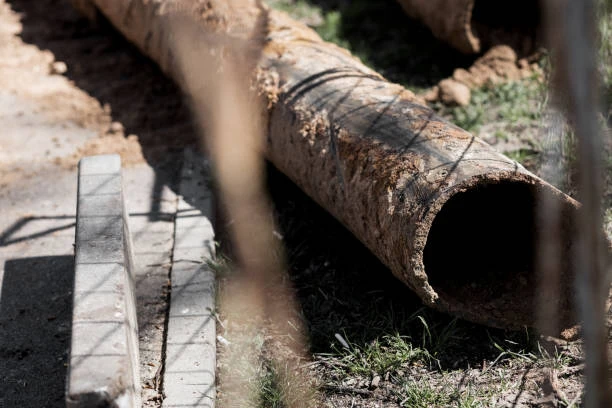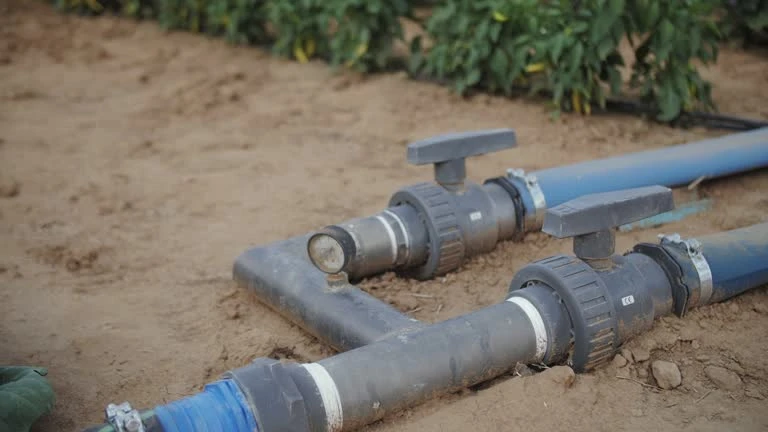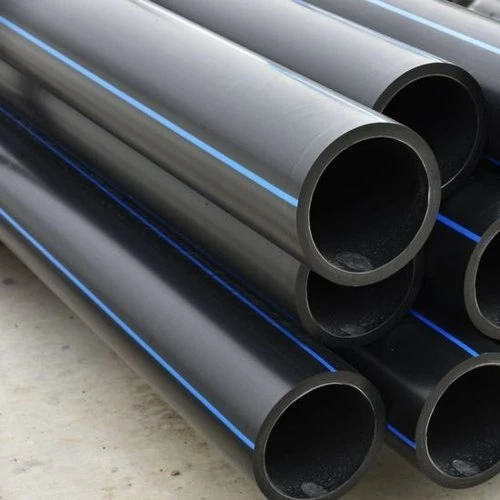Water pipe are one of the most crucial components of urban infrastructure, delivering clean drinking water, facilitating wastewater disposal, and supporting industrial processes. However, as water pipe systems age and face the stress of continuous use, they are prone to failures such as leaks, bursts, and contamination. Traditionally, preventing water pipe failures has been based on reactive measures or speculation, relying on the visual inspection of pipes or guessing when maintenance is needed. But as technology has evolved, a transformative shift has occurred: artificial intelligence (AI) is now at the forefront of water pipe management, enabling predictive maintenance, enhancing decision-making, and drastically reducing the risk of unexpected failures.
In this article, we will explore the role of AI in preventing water pipe failures, discussing how data-driven solutions are transforming water infrastructure management. We’ll examine how AI can forecast potential issues before they happen, how it integrates with existing systems, and the tangible benefits it offers utilities, businesses, and consumers alike.

Understanding the Problem of Water Pipe Failures
Before diving into AI’s role, it’s important to first understand the nature of water pipe failures and why they are such a pressing issue.
Aging Infrastructure
Many urban water systems rely on aging infrastructure, with some pipes in place for over 100 years. As pipes deteriorate due to factors such as corrosion, soil movement, and increased water pressure, they become more susceptible to leaks, cracks, and full-scale failures. For example, the American Society of Civil Engineers (ASCE) has consistently rated water infrastructure in poor condition, estimating that the U.S. loses over 6 billion gallons of treated water per day due to leaks and other issues.
The High Costs of Water Pipe Failures
Water pipe failures can lead to significant financial and environmental consequences. From costly repairs to the disruption of services for both residents and businesses, the impact of a burst pipe or leakage can be overwhelming. Additionally, undetected water losses contribute to rising operational costs, and poor water quality due to contamination poses health risks. Water utilities often face difficult decisions about where and when to invest in repairs or upgrades to aging infrastructure, making proactive maintenance essential.
How AI is Changing Water Pipe Maintenance
AI-powered systems are reshaping how utilities approach water pipe management. By leveraging vast amounts of data from sensors, environmental conditions, and historical performance records, AI can provide actionable insights that help prevent water pipe failures before they happen. Below, we examine some of the primary ways AI is being used to monitor, predict, and prevent issues related to water pipes.
1. Predictive Maintenance and Early Detection
Predictive maintenance is one of the most significant advantages of AI in water pipe management. Traditional maintenance strategies are often reactive, focusing on repairs only after a failure occurs. In contrast, AI-powered predictive models use historical data, real-time monitoring, and advanced algorithms to forecast when a water pipe is likely to fail. These models take into account variables such as pipe age, material type, soil conditions, water pressure fluctuations, and past incidents.
For example, AI can predict a water pipe failure based on patterns identified from data gathered from smart sensors embedded in the pipes. The AI models can flag pipes that are at risk of leaking or bursting, allowing water utilities to proactively repair or replace the affected pipes before a major issue arises. This reduces the likelihood of unplanned disruptions and lowers the overall cost of maintenance.
2. Smart Sensors and IoT Integration
AI works hand-in-hand with the Internet of Things (IoT) and smart sensors to gather real-time data from water pipes. Sensors are placed throughout the pipeline network to monitor various conditions such as pressure, flow rate, temperature, and vibrations. These sensors relay continuous data back to AI systems that process and analyze the information to identify anomalies.
For instance, a sudden drop in water pressure or an unusual vibration pattern in a pipe might indicate an early-stage leak or structural weakness. AI systems can instantly flag these potential issues and notify maintenance crews, enabling them to intervene before a failure occurs. The ability to monitor water pipes 24/7 through smart sensors reduces the need for manual inspections and ensures that even the most remote sections of the pipeline are monitored in real time.
3. Leak Detection and Water Loss Prevention
Leakage is one of the most common causes of water pipe failure, and it often goes undetected until it’s too late. AI-driven systems can analyze patterns in water consumption data and detect unusual consumption spikes that may indicate a leak. By cross-referencing data from IoT sensors, AI can pinpoint the exact location of the leak in a matter of hours or even minutes.
Once identified, the system can prioritize repairs based on the severity and potential impact of the leak, allowing utilities to allocate resources more efficiently. In addition to preventing costly repairs, AI-powered leak detection also helps minimize water loss, conserving precious water resources and reducing operational costs.
4. Optimizing Water Pressure
Water pressure plays a significant role in the wear and tear of water pipes. High or fluctuating pressure can cause pipes to crack or burst. AI systems help optimize water pressure by analyzing usage patterns and adjusting pressure levels throughout the network in real-time. For example, if there is a sudden surge in demand, the AI system can predict and compensate for pressure fluctuations, preventing stress on the pipes.
AI can also work with advanced flow control systems to ensure that water pressure is maintained at safe levels, reducing the risk of pipe failure due to pressure extremes. By optimizing pressure throughout the day and night, AI helps extend the life of water pipes and minimizes the likelihood of failures caused by pressure spikes.
5. Enhanced Decision-Making with Data Analytics
AI provides a data-driven approach to decision-making. Water utilities can analyze historical performance data, weather patterns, usage trends, and even customer complaints to identify vulnerabilities in their water networks. These insights allow utilities to prioritize repairs, plan for future upgrades, and allocate resources in the most efficient way possible.
Advanced AI analytics can also identify potential problem areas in the water pipe network that may not be immediately obvious. For example, AI could highlight areas where older pipes are underperforming or where water pressure fluctuations consistently occur, guiding utilities toward targeted interventions that can prevent future failures.
Case Study: AI in Action in Water Pipe Management
A notable example of AI’s impact on water pipe management comes from Thames Water, the UK’s largest water and wastewater services provider. Thames Water has implemented AI-driven predictive maintenance strategies to monitor over 64,000 kilometers of water pipes across London and surrounding areas.
By leveraging AI and machine learning, Thames Water has significantly reduced unplanned service disruptions. Their AI system processes data from sensors embedded in pipes to predict the likelihood of failures. For instance, the system can forecast the exact locations of potential bursts and enable the company to schedule maintenance before problems arise. As a result, Thames Water has managed to save millions of pounds in operational costs while improving customer satisfaction by reducing downtime and service interruptions.
Benefits of AI for Water Pipe Management
The adoption of AI-driven solutions for water pipe management offers a range of significant benefits:
1. Cost Savings
AI helps water utilities optimize their resources by predicting when and where maintenance is needed, allowing for more efficient use of time and money. By preventing major failures and reducing the need for emergency repairs, AI ultimately lowers the overall cost of managing water pipe systems.
2. Improved Service Reliability
With AI-powered systems continuously monitoring water pipes, utilities can ensure a higher level of service reliability. By catching problems early and scheduling maintenance at optimal times, utilities can reduce service interruptions and ensure that customers experience fewer disruptions to their water supply.
3. Sustainability
AI can help utilities reduce water loss, which is both an environmental and financial concern. By identifying and fixing leaks more efficiently, AI supports sustainability efforts by conserving water resources and reducing the carbon footprint associated with pumping and treating water that is ultimately wasted due to leaks.
4. Extended Lifespan of Infrastructure
Predictive maintenance and real-time monitoring help extend the lifespan of existing water pipes. By addressing issues before they escalate into full-blown failures, AI can help water utilities get the most out of their infrastructure investments, reducing the need for expensive replacements.
Challenges and Considerations
While AI presents tremendous opportunities, there are some challenges to consider. One of the primary obstacles is the initial cost of implementing AI systems, including the installation of sensors and upgrading infrastructure to accommodate new technologies. Additionally, the quality of the data collected is crucial; inaccurate or incomplete data can lead to faulty predictions, which could undermine the effectiveness of AI systems.
Moreover, there is a need for skilled personnel to interpret the data and make informed decisions based on AI insights. Proper training and integration into existing workflows are essential to ensuring the success of AI-driven water pipe management systems.
Conclusion
From speculation to data-driven solutions, AI is transforming the way water utilities manage and maintain their water pipe infrastructure. By enabling predictive maintenance, optimizing water pressure, detecting leaks early, and improving decision-making, AI is helping to prevent water pipe failures and ensuring that water systems run more efficiently and sustainably. As the technology continues to evolve, the potential for AI to revolutionize the water industry and improve service reliability is immense.
By leveraging data and machine learning, water utilities can better safeguard their infrastructure, reduce costs, and provide more reliable services to their customers. As AI adoption grows across the sector, it could ultimately serve as a model for other critical infrastructure industries looking to modernize and improve resilience.
FAQs
1. How does AI predict water pipe failures? AI predicts water pipe failures by analyzing data from sensors embedded in Water pipes, including pressure, temperature, and flow rate. Machine learning models then detect patterns in the data that indicate the likelihood of failure, enabling proactive maintenance.
2. What are smart sensors, and how do they work? Smart sensors are devices placed in water pipes to monitor various factors like pressure, temperature, and vibrations. They collect


















